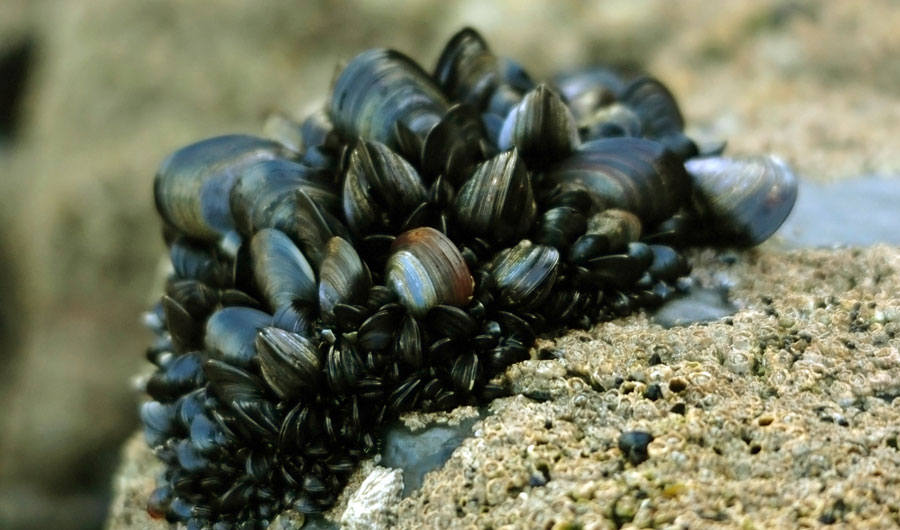Mussels spend their days withstanding crashing waves and brutal intertidal environments. A question that has long fascinated scientists and students alike is how they manage to stay tethered to rocks and their fellow mussels amidst these conditions. Luckily, evolution has solutions to such complex design challenges—and it also provides inspiration for human engineers. A recent McGill-led study published in Science details the process by which mussels produce their uniquely powerful glue.
Matthew Harrington, senior author of the paper and an associate professor in McGill’s Department of Chemistry, emphasized that the mussel glue mechanism was difficult to parse and even harder to emulate.
“This is not easy since [the glue secretion] process is hidden inside a secretory organ called the foot,” Harrington wrote in an email to The McGill Tribune. “To overcome this challenge, we used a combination of traditional biochemistry methods coupled with cutting-edge material science methods.”
Understanding how mussel glue forms can also have practical applications for human technology, such as surgical glues and dental adhesives. Mussel glues are much better than current human-made adhesives, which lose function in wet or humid environments.
Working with the blue mussel Mytilus edulis, the team reconstructed the mussel foot using micro-CT tomography, revealing a complex network of longitudinal ducts (LDs), or long tubes. Two different microscopy techniques revealed that many tiny little hairs called cilia and microvilli form these LD micro channels. The mussels secrete byssus fibers, which attach the mussel to a solid surface, through an acidic secretion of fluid protein precursors into the distal depression, an indent at the tip of the foot’s ventral side. Before formation, plaque vesicle contents are highly fluid but rapidly form a solid, porous network. Mature plaques are then mechanically strengthened by protein-metal ion interactions, mediated by a compound called silk fibroin, a protein produced by numerous insects such as silkworms. The researchers were surprised to find that the mussels use vanadium—an extremely rare metal in nature—in this process.
This research reveals several important insights relevant to bio-inspiration: The iron and vanadium ions used to form the plaque are accumulated and stored in the foot away from proteins necessary to the glue. Tiny metal flecks called intracellular metal storage particles (MSPs) are transported and mixed during plaque formation. As the secreted contents move through channels, the MSPs release their metal ions that spread throughout the plaque, allowing the glue to retain its structure.
For Harrington, the most exciting part of this research is discovering the secrets of nature’s engineering.
“These materials and fabrication processes evolved over billions of years,” Harrington explained. “We are basically reverse engineering them to figure out useful chemical and materials tricks that we can then apply in a synthetic context.”
This innovative study uncovered much more of the glue formation process than was previously known. Harrington also notes that understanding how the glue mixes with metal ions—and to identify exactly which metal ions are being used by the mollusc—is crucial in order to mimic these processes in the lab. Indeed, there is an entire field dedicated to the human study and application of nature’s mechanisms: Biomimicry.
“Humans are already making mussel-inspired glues that function in wet environments. However, these glues mainly just mimic a specific aspect of the glue chemistry—the use of a chemical group called a catechol, which is really good at binding to surfaces,” Harrington wrote.
In addition to mussel glue formation, scientists in the biomimicry field are also studying spider silk production of smart wearable fibres, examining photosynthetic leaves to engineer efficient solar cells, and investigating snake toxins to manufacture anti-depression drugs.








